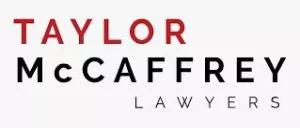I previously wrote an article entitled The Common Law Tort of Harassment: Fact or Fiction?! regarding the Ontario Court of Appeal decision of Merrifield v. Canada (Attorney-General), 2019 ONCA 205, which held that an employee cannot sue for harassment in and of itself. In British Columbia, the Supreme Court also declined to recognize the tort of harassment in the decisions of Stein v. Waddell, 2020 BCSC 253 and Anderson v. Double M. Construction Ltd., 2021 BCSC 1473. As such, it is notable that the Alberta Court of King's Bench recently became the first Canadian province to recognize the tort of harassment in the decision of Alberta Health Services v. Johnston, 2023 ABKB 209.
Justifying the New Tort of Harassment
In the decision of Alberta Health Services v. Johnston, Justice Colin Feasby provided a rationale for establishing the new common law tort of harassment.
The existence of the criminal offence of harassment under Section 264 of the Criminal Code set up the inherent wrongful nature of harassment. Although not all criminal offences have a civil law equivalent, Justice Feasby reasoned that the classification of harassment as a criminal act supported the legal proposition that a civil remedy should also exist to address such wrongful behaviour. Further, since parties can already sue for internet harassment, it made little sense not to have a civil legal claim for harassment too.
Justice Feasby pointed out in the decision the frequency at which the courts grant restraining orders for harassing behaviour, which affirmed the justiciability of harassment-related issues. He proposed that increasing the court's authority to include the ability to award damages enhanced its capacity for reaching just results. Justice Feasby also noted that the creation of the common law tort of harassment would not impede the legislature from creating a statutory cause of action or providing direction that harassment is non-actionable conduct.
Justice Feasby went on to recognize the inadequacy of the existing statutory protections and tort law framework to address the harms inflicted by bullying and harassment behaviour. All jurisdictions in Canada prohibit harassment and discrimination based on protected grounds of discrimination such as sex, race, religion or disability. Victims of bullying and harassment who are targeted because of their personal characteristics can pursue a complaint under the applicable federal or provincial human rights legislation. Harassment is also prohibited under federal and provincial health and safety legislation, and employers must maintain a workplace free from harassment and violence. Bullying and harassment that occurs in the workplace can form the basis for a complaint under federal or provincial legislation. Finally, in more extreme cases where the conduct rises to the level of criminal harassment, a victim may file a complaint with the police service under the Criminal Code.
However, all of this begs the question of what statutory protection would be available to victims who were harassed outside of the workplace or an educational environment where there was no direct connection between the impugned conduct and the victim's personal characteristics or the behaviour did not rise to the criminal standard. Although a victim could sue for harassment and bullying behaviour in the current common law torts of assault, nuisance, invasion of privacy, intrusion upon seclusion, intentional infliction of mental suffering/distress/harm and/or intimidation, the unique requisite elements associated with each of these nominal torts may mean that none of them apply in a particular factual scenario. As such, Justice Feasby held that it was now time to recognize the common law tort of harassment to address the harms inflicted by harassment.
Facts and Decision
Alberta Health Services v Johnston arose as a result of a self-appointed, anti-public health spokesperson, Calgary mayoral candidate, host of an online talk show and social media influencer, Kevin Johnston's highly publicized bullying behaviour towards Alberta Health Services employees at the height of the COVID-19 pandemic. Mr. Johnston engaged in regular and very public harassment of Alberta healthcare employees acting in the course of their duties enforcing public health orders during the COVID-19 pandemic. He described Sarah Nunn, a public health inspector employed by Alberta Health Services as, among other things, a "Nazi", a "terrorist", a "criminal", a "horrible human being", an "alcoholic" and that he intended to "make this woman's life miserable", to "destroy her life" and that he was "coming after her". In addition, he posted online pictures of Ms. Nunn and her husband that he obtained from her social media account. Although Mr. Johnston's derogatory comments were untrue, mean-spirited, rude and abrasive, he never apologized to Ms. Nunn and, in fact, at the hearing, maintained that his statements were justified. For her part, Ms. Nunn testified that Mr. Johnston's conduct caused her to fear for her safety and that of her children, that she "feared to leave her home", and felt compelled to install a home security system.
Ms. Nunn and Alberta Health Services sued Mr. Johnston, seeking damages for defamation, assault, invasion of privacy and "tortious harassment". Mr. Johnston never filed a statement of defence and the matter was set down for hearing. At the conclusion of the hearing, Justice Feasby found that the actions of Mr. Johnston met the legal test for harassment, ordering $100,000 in general damages against Mr. Johnston for breach of the tort, along with general damages for defamation of $300,000 and aggravated damages of $250,000, all payable to Ms. Nunn.
The Elements of the Tort of Harassment
Justice Feasby drew upon the criminal definition of harassment and the courts' many years of considering harassment cases in the context of restraining orders to provide a doctrinal foundation and structure for the new tort of harassment. Specifically, Justice Feasby ruled that a defendant commits the tort of harassment where the following four-part legal test was satisfied:
- the defendant engaged in repeated communications, threats, insults, stalking, or other forms of harassing behaviour, either in person or through various means;
- the defendant knew, or ought to have known, that their conduct was unwelcome;
- the plaintiff's dignity was impugned, causing a reasonable person to fear for their safety or the safety of their loved ones or reasonably foreseeing emotional distress as a result; and
- the plaintiff suffered harm as a direct consequence of the defendant's actions.
Having set out the justification for, and the requirements of the new common law tort of harassment, Justice Feasby concluded that Mr. Johnston's conduct towards Ms. Nunn fell within the parameters of this new cause of action. Although "Ms. Nunn did not adduce any evidence of illness", she suffered serious "emotional distress", thus justifying an award of general damages for harassment of $100,000. He also noted that Ms. Nunn could recover the costs of installing a home security system as special damages under the tort of harassment.
Subsequent Court Decisions
Alberta Health Services v Johnston is the first Alberta case recognizing a stand-alone common law tort of harassment. This decision seeks to fill in a gap in statutory and common law remedies for victims suffering harassment.
A more recent Alberta Court of King's Bench decision, Achor v. Ihekweme, 2023 ABKB 606, recognized the tort of harassment, but declined to make a separate award for harassment concluding: "To the extent that Ms. Ihekweme's defamatory damages also constituted harassment, any damages for harassment are subsumed in the general damage award for defamation." This decision signals that the new tort of harassment is here to stay; at least in Alberta.
To date, no other Canadian court has formally recognized the tort of harassment and it remains to be seen whether this new tort will be widely introduced into the Canadian common law. In the decision of Howlett v. Northern Trust Company, 2023 ONSC 4531, the Ontario Superior Court of Justice on a summary proceeding declined to dismiss the plaintiff's claim in part on the basis of Alberta Health Services v. Johnston explaining in paragraph 97: "In the immediate case, the trial judgment in Alberta Health Services v. Johnston, does not articulate the law of Ontario, but it does support my conclusion it is not plain and obvious that Ms. Howlett's two novel causes of action do not disclose a reasonable cause of action in Ontario, where the law may also be developing."
Employer Takeaways
Employers (especially in Alberta) should take note of the Alberta Health Services v. Johnston decision, This new tort may well ground future claims of workplace harassment between employees, with potential for the vicarious liability of the employer. Therefore, employers must remain diligent in dealing with allegations of harassment by managers and co-workers. This involves keeping up-to-date anti-harassment and bullying policies in place, along with regular training of employees on these policies.
The content of this article is intended to provide a general guide to the subject matter. Specialist advice should be sought about your specific circumstances.

